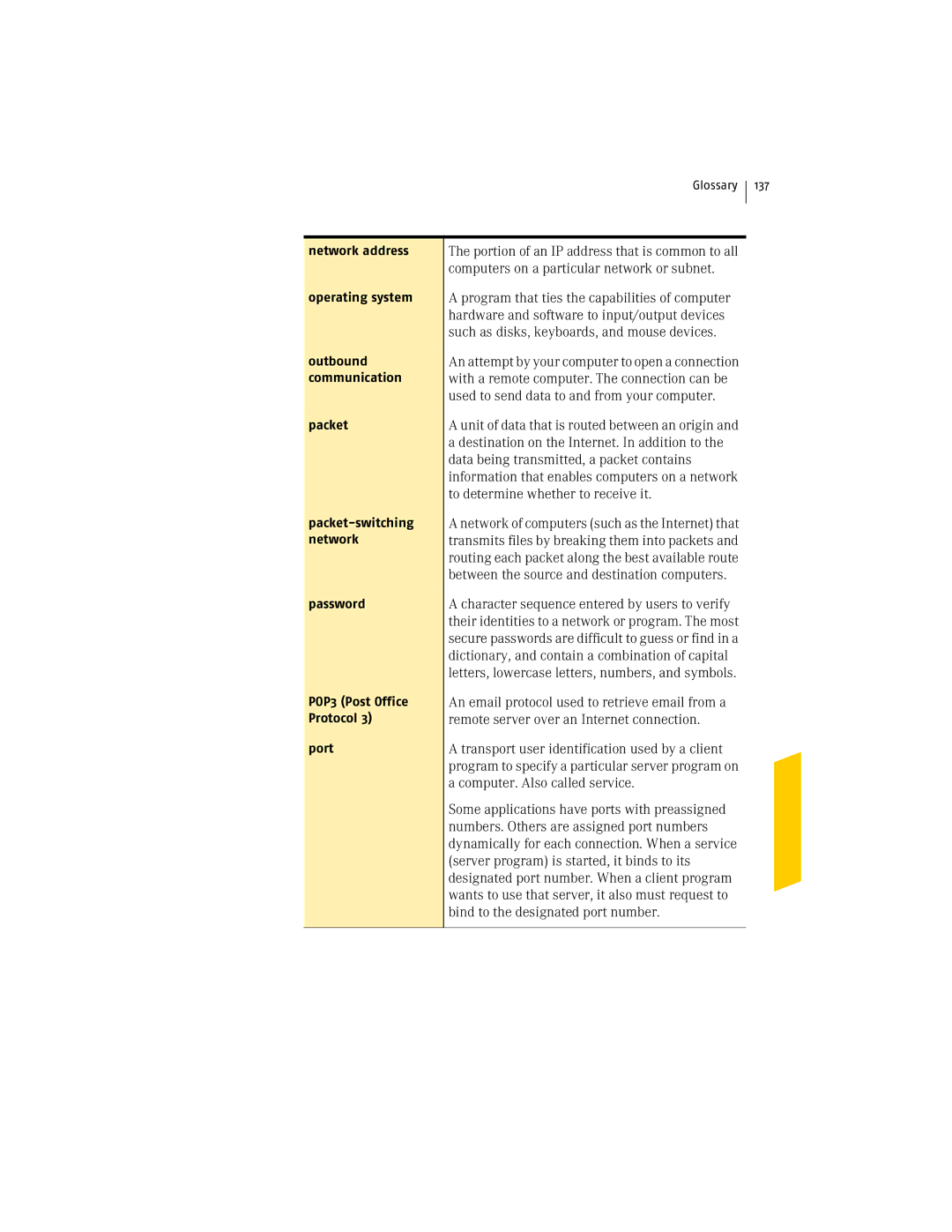
Glossary
137
network address
operating system
outbound communication
packet
password
POP3 (Post Office Protocol 3)
port
The portion of an IP address that is common to all computers on a particular network or subnet.
A program that ties the capabilities of computer hardware and software to input/output devices such as disks, keyboards, and mouse devices.
An attempt by your computer to open a connection with a remote computer. The connection can be used to send data to and from your computer.
A unit of data that is routed between an origin and a destination on the Internet. In addition to the data being transmitted, a packet contains information that enables computers on a network to determine whether to receive it.
A network of computers (such as the Internet) that transmits files by breaking them into packets and routing each packet along the best available route between the source and destination computers.
A character sequence entered by users to verify their identities to a network or program. The most secure passwords are difficult to guess or find in a dictionary, and contain a combination of capital letters, lowercase letters, numbers, and symbols.
An email protocol used to retrieve email from a remote server over an Internet connection.
A transport user identification used by a client program to specify a particular server program on a computer. Also called service.
Some applications have ports with preassigned numbers. Others are assigned port numbers dynamically for each connection. When a service (server program) is started, it binds to its designated port number. When a client program wants to use that server, it also must request to bind to the designated port number.
